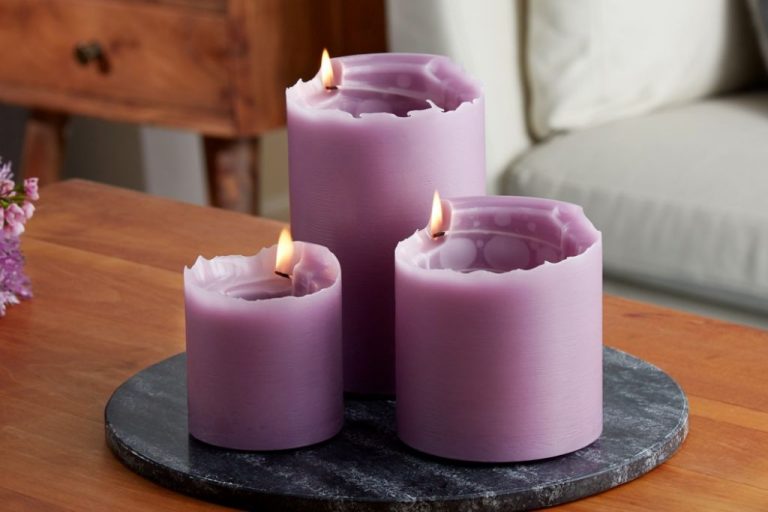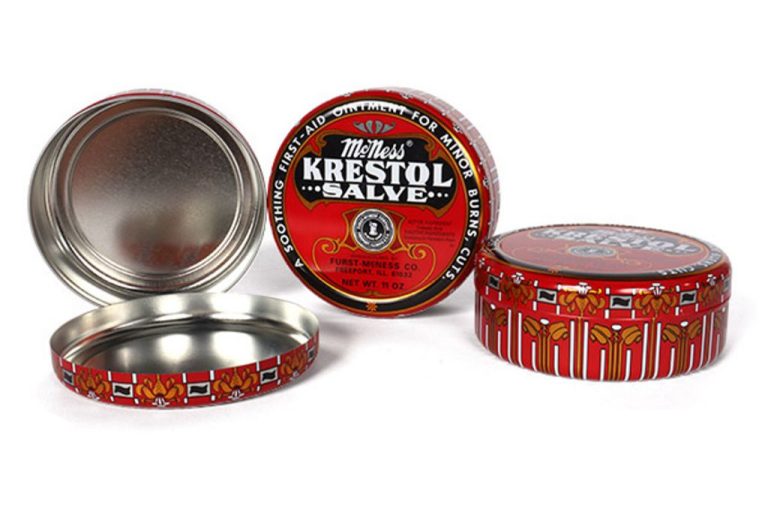Are Soy Candles Toxic Free?
Soy candles are candles made from soy wax, which is a hydrogenated form of soybean oil. Soybean oil comes from soybeans, which are a crop grown primarily in the United States. Soy wax is a clean burning, renewable and sustainable wax made from soybeans.
The natural molecular structure of soy wax allows it to hold more fragrance oil and burn longer than paraffin wax candles. Soy candles are often praised as an eco-friendly alternative to paraffin candles because soy wax is made from a renewable resource. Soy wax also burns cleaner than paraffin wax which produces more soot.
Compared to paraffin wax candles, soy wax candles are known for having excellent scent throw, holding to color dyes well, and being soft enough to easily release from containers and molds. Soy candles often burn slower and cooler than paraffin wax candles because of the density of the wax.
Soy Wax Ingredients
The main ingredients in soy wax are soybean oil, palm oil, and other vegetable oils. According to CandleScience, soy wax is made from hydrogenated soybean oil and other natural vegetable oils and ingredients[1]. The soybean oil is hydrogenated to increase its melting point and make it solid at room temperature. The vegetable oils help modify the wax’s melting point, hardness, and crystallization rate. Palm oil is commonly added to improve the wax’s opacity, creaminess, and burning time[2]. Other potential additives are coconut oil, sunflower oil, rapeseed oil, and corn oil. Unlike paraffin wax from petroleum, soy wax comes from renewable plant-based sources.
Benefits of Soy Candles
One of the biggest benefits of soy candles is that the main ingredient, soy wax, is a renewable and sustainable resource. Soy wax is made from soybean oil, which comes from soybean crops. Soybeans are grown annually on farms, making soy wax a rapidly renewable resource compared to paraffin wax which is made from crude oil.
According to the National Soybean Research Laboratory, soybean oil accounts for 80% of the fats and oils consumed in the United States. With soybean crops covering over 90 million acres in the U.S., there is an abundant supply of soy wax for candle making.[1] Using soy wax supports American farmers and reduces reliance on non-renewable fossil fuels.
In addition to being a renewable resource, soy wax is also biodegradable. Soy candles made from soy wax can safely break down in the environment at the end of their lifecycle. Paraffin wax, on the other hand, is non-biodegradable and can persist in the environment.
Toxicity Concerns
While soy wax candles are often marketed as a natural, non-toxic alternative to paraffin candles, there are some potential toxicity concerns to be aware of:
One issue is lead core wicks. Some wicks contain small amounts of lead to help keep them upright as the candle burns. Lead exposure, even in small amounts, can be dangerous especially for children (https://www.healthline.com/health/are-candles-bad-for-you). To avoid lead exposure, look for candles specifically labeled as having a lead-free cotton or paper wick.
Another concern is pesticide residues. Since soy wax comes from soybean plants, traces of pesticides used during farming may remain in the wax. Look for candles made with organic soy wax to minimize this risk. Testing for pesticide residues can also help identify contaminated batches (https://pantryfuel.com/blogs/blog/why-we-will-never-burn-soy-candles-again).
Testing for Toxins
To properly evaluate the toxicity of soy candles, independent third-party testing is necessary. According to studies by organizations like
Candle Science & Testing,
laboratory testing procedures can accurately measure the emission of potential toxins like dioxins and furans when burning candles. Testing has shown that
soy, paraffin, palm and other wax candles produce very low levels of concerning compounds during normal use.
While no candle wax is completely toxin-free when burned, these lab studies indicate that soy and other natural waxes do not appear to pose significant health risks. However, more comprehensive long-term studies would help affirm the safety of soy candles and other candle varieties.
Eco-Friendly Certifications
When shopping for soy candles, look for candles made with wax that has eco-friendly certifications. Two of the main eco-certifications for soy wax are USDA Organic and EcoCert.
The USDA Organic certification means the soybeans used to make the wax were grown without synthetic pesticides or fertilizers. Soybean farmers have to apply and be approved to be USDA Organic certified. Once certified, they must follow strict guidelines for growing and processing the soybeans organically. Soy wax made from USDA Organic soybeans can be labeled as “made with organic.”
EcoCert is an ecological certification for cosmetics, textiles, and other products. For soy wax to be EcoCert certified, the full supply chain must be audited and meet sustainability standards. This includes checking that the soybeans are grown responsibly, without GMOs or harmful pesticides. It also verifies sustainable practices are used in transporting and processing the beans into wax. EcoCert certified soy wax reassures consumers the wax was produced in an environmentally friendly way.[1]
Opting for soy candles made with USDA Organic or EcoCert waxes is an easy way to ensure your candle purchase aligns with your eco-values. The certifications provide third-party validation of sustainable, non-toxic production methods.
Fragrance Oils
Fragrance oils are used to add scents to soy candles. There are two main types of fragrance oils: natural essential oils and synthetic fragrance oils. Natural essential oils are extracted from plants through distillation or expression. They contain the true scent of the plant. Synthetic fragrance oils are artificially created in a lab to mimic natural scents or create entirely new scents. They are made from chemical isolates and compounds.
Natural essential oils are considered less toxic than synthetic fragrance oils. Synthetic fragrance oils often contain chemicals like phthalates and limonene that can be irritants or disrupt hormones (Source 1). However, some essential oils like cinnamon can cause skin irritation for some people. Not all synthetic fragrance oils contain toxic chemicals either.
When choosing between natural and synthetic fragrance oils for soy candles, consider any allergy concerns, as well as testing the fragrance oil’s flashpoint to ensure safety. Reputable candle makers will list fragrance ingredients and note if they are phthalate-free. Seeking out soy candles scented only with essential oils is an option for avoiding synthetic fragrance oils.

Wick Materials
The wick is a key component that impacts the safety of candles. Traditional candle wicks were often made with materials like lead or zinc cores that could release toxic heavy metals into the air when burned. According to a study by the U.S. Environmental Protection Agency, burning a lead-core wick candle can emit dangerous levels of lead into the air, exceeding EPA air quality standards for outdoor air by over 500% (https://www.greenamerica.org/toxic-candles).
Thankfully, most modern candle manufacturers now use lead-free materials for their wicks. Lead-free wicks are typically made from materials like paper, cotton, or wood. Soy wax candles specifically tend to use cotton core wicks, which burn cleaner than other materials. Cotton burns cooler and does not release any heavy metals. This makes soy candles with cotton wicks an excellent lead-free and non-toxic option.
When shopping for candles, check that they are made with lead-free, cotton core wicks. Avoid any candles, especially scented and inexpensive ones, that may still rely on metal-core wicks. Opting for lead-free wick materials is key for reducing indoor air pollution and exposure to toxins from candles.
Alternative Wax Options
In addition to soy wax, there are other natural wax options that are considered non-toxic. Two popular alternatives are beeswax and palm wax.
Beeswax is a natural wax made by honey bees. It has a pleasant honey-like scent when burning. Beeswax candles produce less soot and burn longer than paraffin candles (Source: https://maisonpur.com/?p=8594). The downside is beeswax is more expensive than soy wax.
Palm wax comes from the fruit of palm trees. It is hard, opaque, and burns cleanly. Palm wax doesn’t release any toxic fumes or residue when burning. It also has a high melting point resulting in minimal wax pooling (Source: https://orbasics.com/blogs/stories/guide-to-non-toxic-candles-the-best-10-non-toxic-candle-brands). Some environmental concerns exist around palm oil production, so opt for sustainably sourced palm wax.
Both beeswax and palm wax are considered non-toxic, eco-friendly alternatives to paraffin that burn cleanly. When choosing candle wax, consider factors like scent, burn time, melting point, and sustainability.
Conclusion
After reviewing the components that make up soy candles, we can conclude that they are generally considered non-toxic and eco-friendly. The main ingredient, soy wax, is made from soybeans and contains no chemicals or toxins. While fragrance oils may contain some synthetic ingredients, most soy candle manufacturers use essential oils and natural fragrances.
The wicks are typically made of cotton, wood, or paper, avoiding harmful materials like lead. With proper testing and certification, soy candles can provide a clean-burning, sustainable alternative to paraffin wax candles. When sourced and produced responsibly, soy candles are a non-toxic option that many consumers prefer for home use.
In summary, soy candles get high marks for safety and sustainability. With mindful selection of fragrance and wicks, soy candles can provide an eco-friendly lighting solution free of toxic chemicals or pollutants. Consumers seeking non-toxic home products can feel confident using candles made from natural soy wax.


